Tuberculosis: History and Its Discontents
By Kayla M. Foster (MPA 2025)
“Underfunded, underdiagnosed, and undertreated.” These are the characteristics of tuberculosis (TB) and multidrug resistant tuberculosis (MDR-TB) highlighted by Dr. Carole Mitnick as she primed the standing-room only crowd for the panel discussion to follow. TB is the leading infectious killer of adults worldwide, and while it is both preventable and curable, the stigma associated with the illness has led to historic and systematic disinvestment from eradicating the disease. As the primary patent of bedaquiline recently expired, there has been mass organizing and movement behind the withdrawal and non-enforcement of secondary patents of the life-saving drug in other low- and middle- income countries. With a renewed spotlight on TB’s global impact and the accessibility of the drugs which can treat it, there is hope that the tide may be turning in the fight to eliminate TB.
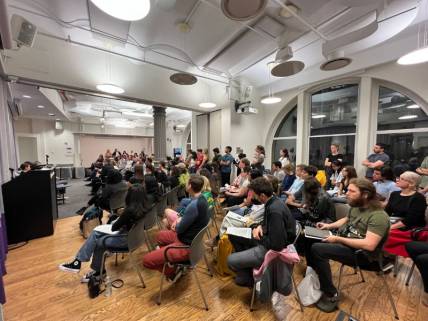
On Friday, September 22nd, in the wake of the United Nations General Assembly High Level Meeting on Tuberculosis, NYU students and the New York City community gathered in the Rudin Family Forum for Tuberculosis: History and Its Discontents. The panel discussion featured five authors:
- John Green, an award-winning, #1 best-selling author and recent TB activist;
- Handaa Enkh-Amgalan (Wagner MPA 2019), a TB survivor, advocate and author of STIGMATIZED: A Mongolian Girl’s Journey from Stigma & Illness to Empowerment;
- Vidya Krishnan, a widely published investigative journalist and author of Phantom Plague: How Tuberculosis Shaped History;
- Maria Smilios, the author of The Black Angels: The Untold Story of the Nurses Who Helped Cure Tuberculosis;
- Carole Mitnick, Professor of Global Health and Social Medicine at Harvard Medical School, who served as the moderator of the panel and contributed to Guidelines for the Programmatic Management of MDR-TB.
What began as a pensive gathering of people from across the board—TB activists and advocates, public health professionals, students, community members, John Green fans, and those learning about TB for the first time—ended as an ignited front of individuals armed with budding knowledge and recognition that a new history for TB can be written through collective action and persistence.
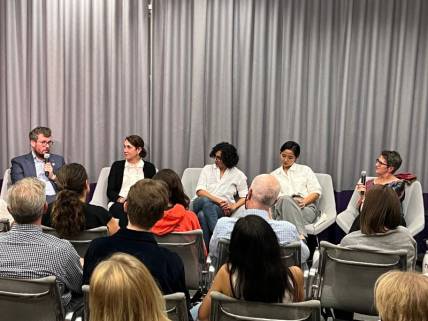
Stigma Is A Major Factor in TB Persistence
Enkh-Amgalan, who spoke at the UN High Level meeting earlier that day, stressed that stigma is one of the major driving factors behind TB’s persistence and devastating impact. She shared stories from her own experience living with TB spanning her diagnosis, where her doctor told her not to share her TB positive diagnosis with anyone, to treatments under the TB-Directly Observed Treatment, short course (DOTs), where TB medication is dispensed at specific clinics and clinicians watch patients take their medication followed by checking their mouths to ensure that it has been ingested. Globally, the treatment of TB patients is dehumanizing, and the colliding stigmas they face vary depending on the country and region. During Enkh-Amgalan’s speech at the UN High Level meeting, she called on country representatives to take action in getting an understanding of TB stigma in the context of their specific countries. Linking TB stigma with the stigmas associated with poverty, HIV AIDS, incarceration, and gender within Mongolia, Enkh-Amgalan challenged the audience to break down misconceptions surrounding associations. Enkh-Amgalan also highlighted that associated stigmas in her home country of Mongolia and stigmas in Uganda, where she currently lives and works, look different.
Smilios also shared Enkh-Amgalan’s sentiments and reiterated the impact of stigmatization on the pervasive nature of TB expressing that even 80 years ago, when the events in her book were occurring, the compounding stigma of positive TB status, race (being Black) and ethnicity (especially of immigrants) were driving factors of the ostracization. She also highlighted the ways in which TB stigmatized not only the patient but also the entire family. Smilios shared stories of the last living Black Angel (the Black nurses who worked at Seaview Hospital in Staten Island), Virginia Allen, who would often talk about the children who were abandoned at the hospital due to families inability to withstand the crushing weight of the stigma associated with the disease. The stigmatizing impact of TB in the past and present must be addressed in order to push forwards the eradication of TB.
So how can stigma be combatted? Enkh-Amgalan shared her belief that the humanization of TB is a necessary step. Through her own work destigmatizing the disease, Enkh-Amgalan knows the power and impact of survivors sharing their lived experiences as a crucial humanizing practice. Within communities of TB survivors, Enkh-Amgalan highlights the need for peer support groups to reaffirm their dignity and assure them that, “TB does not define your worth.” Additionally, she shared that listening to TB survivors and holding space for them to share their stories and lived experiences returns humanity to a systemically dehumanized disease experience.
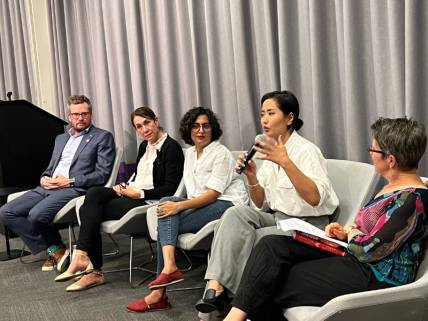
Maintaining Hope and Collective Power
Throughout the panel Smilios provided a grounding historical perspective of TB in New York City, highlighting the ways in which the stigma and treatment of TB has remained relatively constant over the past 80 years. With this knowledge, it can be easy to lose hope that an end to TB could ever be in sight. However, the panelists instilled the importance of remaining dedicated to the fight and keeping sight of hope. Green recognized that feelings of despair and powerlessness are natural in the face of centuries of compounding injustice. However, Green reminded the audience that if those on the frontlines of TB eradication, who he calls “TB heroes,” are not hopeless, we should not be either. Krishnan, who considers her book and articles chronicling TB and HIV AIDS as combat literature, definitively stated that, “Despair is a luxury…There is something to be said about persisting.” In countries like India, where there is a drug stockout of TB treatments in many areas, the importance of gripping onto hope is all the more important. When speaking of hope and collective power, Krishnan highlighted the work of Nandita, a survivor and advocate who has relapsed on TB twice, who was instrumental in challenging the secondary patenting of bedaquiline and winning.
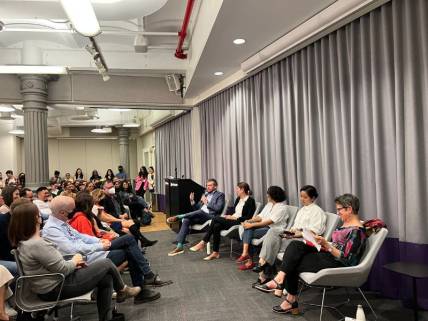
Turning the Tides in the Global Fight against TB
As expressed by the panelists and audience members who engaged in discussion, TB has a public relations issue. It is the highest infectious disease killer of adults worldwide, yet many people in the global north do not know about the disease. As Krishnan points out, TB has often been treated as an afterthought or “sidekick” to other diseases and movements. She explained the ways in which stigma contributes to the lack of compassion shown to TB patients, and how this dehumanization of TB patients pervades healthcare systems, governments, and society at large. However, with the availability of mass communication and social media channels like TikTok, Green and other panelists spoke to the collective power we have to share information about TB and activate a ripple effect of organizing, advocacy, and humanization towards its eradication.
The panelists also made it clear that our public health systems need a paradigm shift. Krishnan stated that “We need dramatic, drastic changes in how we look at public health because there is no ‘public’ in health anymore. There’s only profit in it.” In the current system, as Krishnan points out, “no one can be saved unless others can profit from it.” Smilios shared similar sentiments while expressing that, “When we look at a public health system we have to say we want to get rid of it [TB], not we want to make money to get rid of it.” Krishnan also spoke to the necessary decoupling of healthcare and capital, stressing that the root cause of the health inequities and inequalities that manifest in the world originates from “how the economic structure around our health system functions.” To further illuminate the much-needed paradigm shift, Green called to light “TB’s parallel flow with capital,” a phrase Krishnan uses in her book. When speaking of the fact that in the current system medical innovation is not accessible to the communities who are most in need, Green exclaimed that “It's infuriating. It's disgusting. It's the worst of us.” He advocated that we cannot continue to innovate based on who can pay the biggest price tag for the outputs, rather innovation must center the needs of individuals closest to our most pervasive human illnesses. At a fundamental basis, systems level change to public health systems is necessary to ensure that a state of health is achievable and accessible to all.
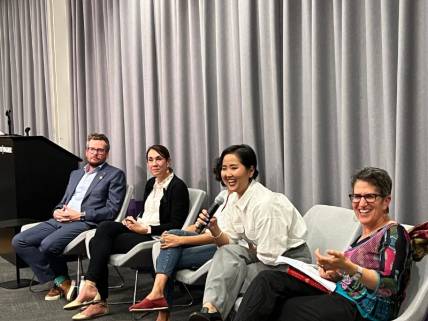
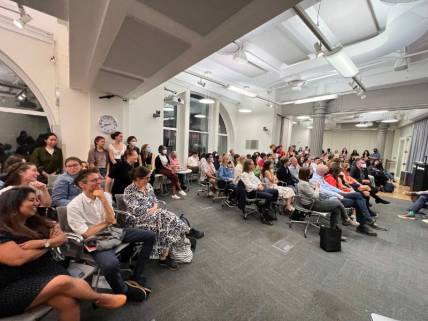
Call to Action: What You Can Do
Throughout every moment of the event, panelists worked to instill a sense of urgency to action in the audience. They emphasized that it is our collective efforts which have the power to eradicate TB and to demand better for the most vulnerable of us around the world. In the words of Green, “We are so powerful together. We scare them [big pharmaceutical companies].” In the public service field we have a choice to place people over profit, and the decision to value people must always be at the forefront of our work.
What can you do today to help build a TB free world tomorrow?
Learn More About the Global State of TB
Books:
- The Black Angels: The Untold Story of the Nurses Who Helped Cure Tuberculosis by Maria Smilios
- The Phantom Plague: How Tuberculosis Shaped History by Vidya Krishnan
- STIGMATIZED: A Mongolian Girl’s Journey from Stigma & Illness to Empowerment by Handaa Enkh-Amgalan
Articles:
- Global Health’s Dirty Secret: Rich Countries Get Good Medicine, and the Poor Sometimes Get Poison by Vidya Krishnan
- The hidden story of Black nurses in the fight against TB and the search for a cure by Maria Smilios
- TOOLS TO TURBOCHARGE THE FIGHT AGAINST TUBERCULOSIS
- New York City struggling to contain rising tuberculosis cases by Maya Kaufman
- Millions could soon have access to lifesaving tuberculosis drug following online uproar by Youri Benadjaoud
- Tuberculosis is curable and preventable – why do millions still die? by Patrick Shepherd
- Big Pharma's Johnson & Johnson Under Investigation in South Africa Over 'Excessive' Drug Prices by Associated Press
- Major drug company bends in battle over access to key TB treatment by Meredith Wadman
Videos:
- How The Body Reacts To Tuberculosis
- TED-Ed What makes tuberculosis (TB) the world's most infectious killer? - Melvin Sanicas
- India's Ticking Time Bomb! | Dr. Zarir Udwadia | TEDxGateway
- Live from UNGA High-level Meeting on tuberculosis
- TB Survivors’ Messages to TB Patients
- TB Personal Stories - Thomas
Podcasts:
- Patents vs. Life-Saving Drugs by Sawbones: A Marital Tour of Misguided Medicine
- Tuberculosis by Sawbones:A Marital Tour of Misguided Medicine
Take Action in Support of Eradicating TB
Written by Kayla M. Foster, a first-year MPA-Public and Nonprofit Management & Policy student at NYU Wagner.